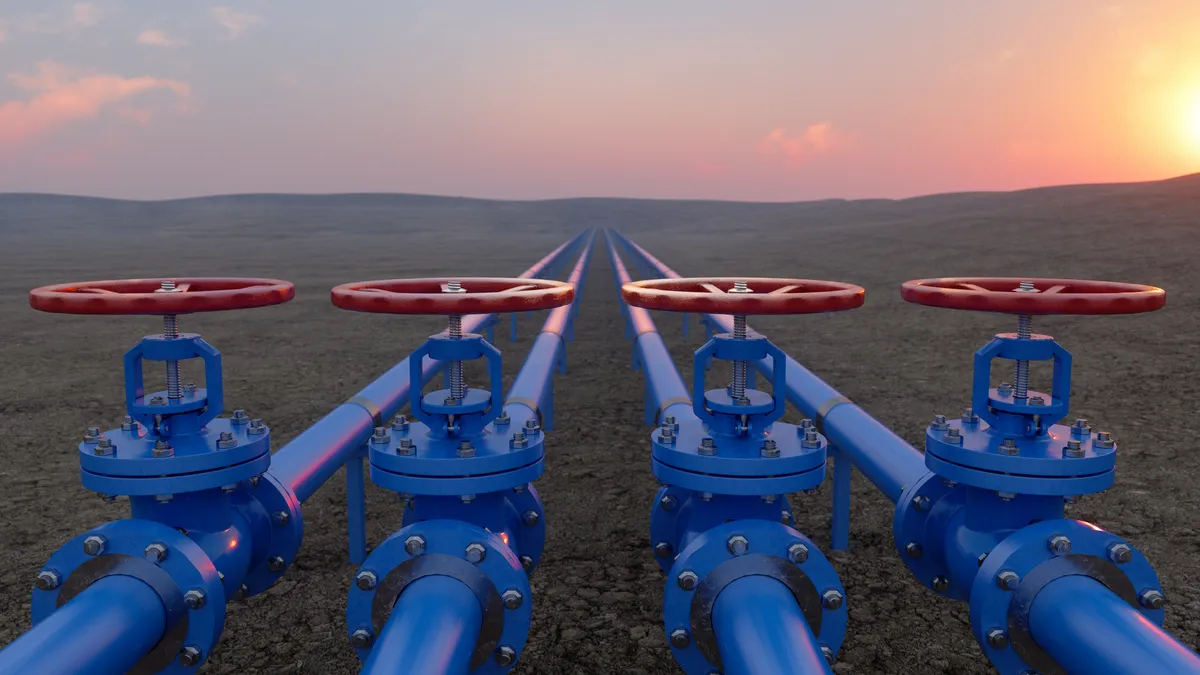Dive Brief:
- California utilities must have state permits to build natural gas projects costing more than $75 million or expected to worsen air pollution in communities with serious air quality problems.
- Each big proposed pipeline or compressor station also must include an assessment of its potential environmental impacts in accordance with the California Environmental Quality Act, or CEQA.
- The order unanimously approved Dec. 1 seeks to reduce greenhouse gasses and toxic emissions, provide details about projects and reduce the stranding of gas assets as the state strives to decarbonize.
Dive Insight:
A unanimously approved CPUC decision requires Pacific Gas & Electric, Southern California Gas and San Diego Gas & Electric to have Certificates of Public Convenience and Necessity, CPCN, for significant pipeline and compressor station projects to help California decarbonize and reduce customers’ costs.
The commission has had a similar order for large electricity projects for 25 years, according to Commissioner Cliff Rechtschaffen.
Matt Vespa, Earthjustice senior attorney, said the decision is the first to correct “significant deficiencies” in the regulation of gas.
“We are finally getting visibility on utility gas projects,” he said.
The order “fills an important regulatory gap while the CPUC develops a long-term gas strategy,” Commissioner John Reynolds said.
To date, utilities have only been required to include their gas projects in their massive general rate cases filed at the commission. These projects have been largely lost among the many items before the commission, significantly limiting review and stakeholder participation, Rechtschaffen said at last week’s CPUC meeting.
Gas projects within 1,000 feet of schools, homes or hospitals also must have permits and be subject to environmental review.
“The gas infrastructure General Order creates safeguards for air quality in regions near communities and allows us to prevent stranded assets as we proceed with the energy transition to achieve our climate goals,” Commissioner Darcie Houck said.
Gas use in the state is declining as 50 jurisdictions ban or restrict its use in new homes and other buildings and because of the state’s drive for a carbon neutral economy by 2045. The CPUC expects demand from California gas utilities to drop by more than 14% by 2035.
The $75 million project cost threshold targets gas projects expected to have the most significant impact on communities and the environment. The utilities pushed for $100 million, saying it would balance costs to customers and potential delays with pre-construction review benefits. Environmental and ratepayer advocates insisted on $25 to $50 million project thresholds to account for harm to communities, particularly disadvantaged ones.
Regulatory gap increasing controversial
The regulatory gap at issue became a major controversy as Southern California Gas started pursuing a replacement and expansion of its Ventura Compressor Station northwest of Los Angeles, Earthjustice’s Vespa said. The station is next to a school in a disadvantaged community.
The new framework requires California’s three gas utilities to file annual reports detailing their plans for projects costing more than $50 million over the next 10 years starting in 2023. More detailed annual reporting, including non-pipeline alternatives, is required for projects expected to start within five years.
The CPUC order exempts projects that will be online before 2024 and those required by state or federal agencies to ensure the safety of gas infrastructure.














